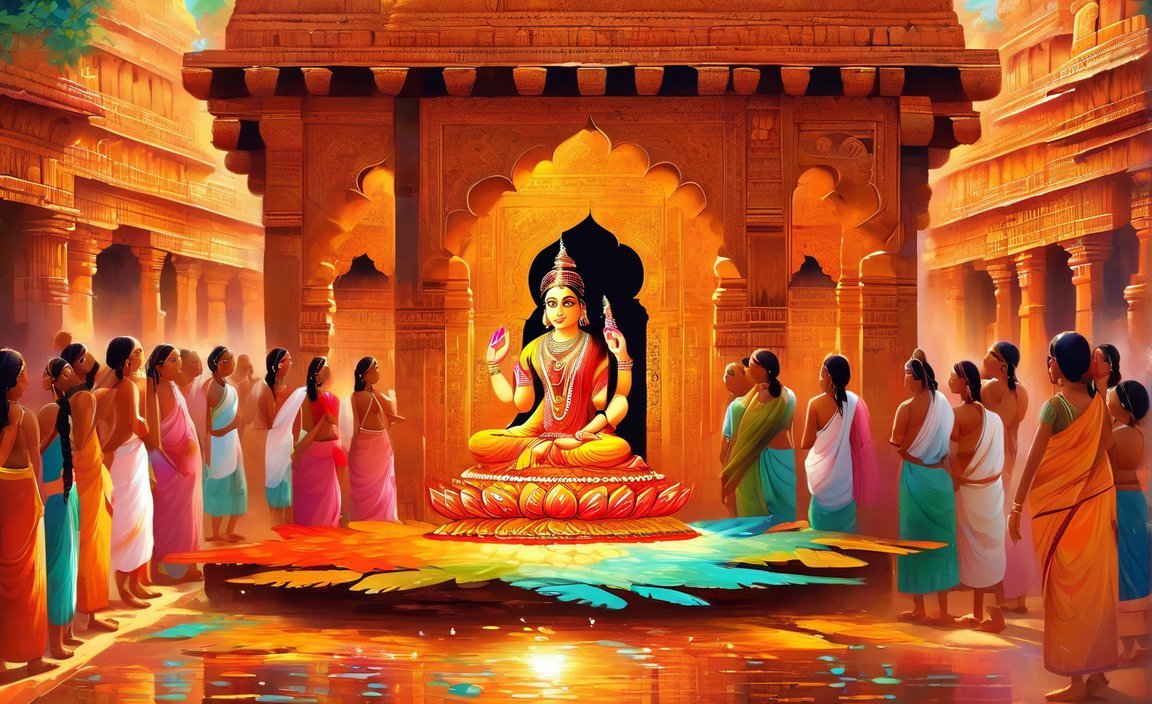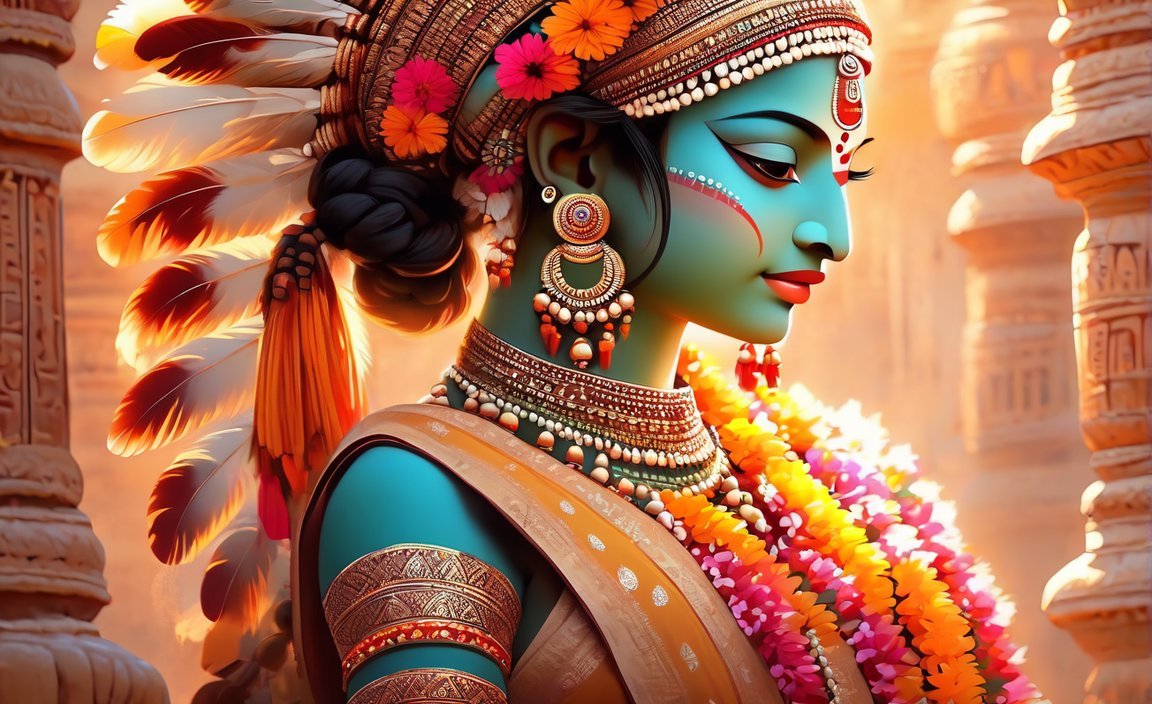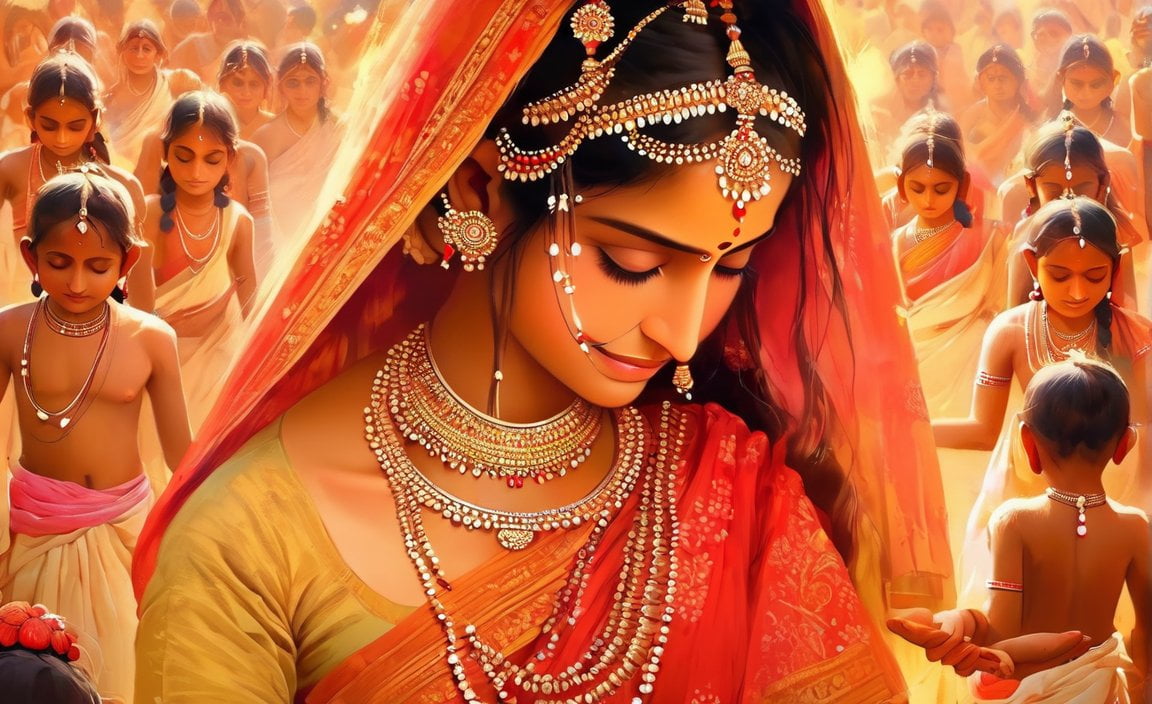Discover Ten Fascinating Facts About Indian Culture as we embark on a captivating journey into the rich tapestry of traditions and practices that define this ancient civilization. From its diverse languages and religions to its vibrant festivals and breathtaking art forms, Indian culture is a treasure trove of wonders waiting to be explored. Through this article, we will delve into ten intriguing facts that will ignite your curiosity and offer a deeper understanding of the remarkable heritage that has shaped this mesmerizing land.

Key Takeaways:
- Cows are considered holy: In India, cows are highly revered and worshipped by Hindus.
- India is the home of almost all religions: India has a rich religious heritage and is the birthplace of major religions such as Hinduism, Buddhism, Jainism, and Sikhism.
- Fasting is related to religious practice: Fasting holds great significance in Indian culture, especially during religious festivals, as it is believed to purify the mind, body, and soul.
- One of the oldest cities is located in India: Varanasi, located in India, is one of the oldest continuously inhabited cities in the world and is considered sacred by Hindus.
- Indian weddings are extravagant: Indian weddings are known for their grandeur, elaborate rituals, and vibrant ceremonies that often span several days.
- Indian cuisine is diverse and flavorful: Indian cuisine is famous for its rich flavors, aromatic spices, herbs, and diverse cooking techniques. Each region has its own unique dishes and specialties.
- India is known for its diverse traditional attire: From sarees and dhotis to turbans and lehengas, each state in India has its own unique clothing style, showcasing the vivid apparel culture of the country.
- The left hand is considered unclean: In Indian culture, the left hand is considered unclean and is not used for eating, giving or receiving items, or for any social interactions.
- Hospitality is highly valued: Indian culture places great importance on hospitality, considering it an honor to be invited to someone’s home for a meal. Guests are treated with respect and warmth.
- India is home to a diverse range of religions: Hinduism, Islam, Christianity, Sikhism, Buddhism, and Jainism coexist in India, making religious diversity a defining characteristic of Indian culture.
10 Interesting Facts About Indian Culture
India, known for its ancient civilization and vibrant heritage, is a treasure trove of fascinating cultural practices. Here are ten intriguing facts that will deepen your appreciation for Indian culture:
1. Cows are considered holy
Did you know that cows hold a sacred place in Indian culture? They are revered and protected by Hindus, who consider them holy animals. In many parts of India, you can witness the sight of cows freely roaming the streets, respected and cared for by the community.
2. India is the birthplace of numerous religions
India’s rich religious tapestry is a testament to its cultural diversity. This vast land is the birthplace of major religions like Hinduism, Buddhism, Jainism, and Sikhism. From ancient temples to majestic pagodas, India is home to sacred sites that attract pilgrims from across the globe.
3. Fasting as a spiritual practice
Fasting holds a significant place in Indian culture, particularly during religious festivals. It is believed to cleanse both the body and the mind, acting as a pathway to spiritual enlightenment. Whether it’s abstaining from food or partaking in specific dietary practices, fasting is a revered tradition in India.
4. Varanasi: One of the oldest inhabited cities
Located on the banks of the sacred Ganges River, Varanasi is among the oldest continuously inhabited cities on Earth. This historical gem is considered a holy place by Hindus, who believe that bathing in the Ganges here can cleanse one’s sins and bring salvation.
5. Extravaganza of Indian weddings
Indian weddings are renowned for their opulence and grandeur. Spanning several days, these celebrations are filled with colorful rituals, melodious music, energetic dancing, and sumptuous feasts. Each wedding is a unique cultural experience, showcasing the diverse traditions and customs of India.
6. A culinary adventure awaits
Prepare your taste buds for a gastronomic journey through India’s diverse cuisine. Known for its aromatic spices, herbs, and bold flavors, Indian food is a delightful fusion of regional dishes. From the fiery curries of the south to the fragrant biryanis of the north, every bite unveils a tapestry of flavors.
7. Vivid attire reflecting India’s diversity
Indian clothing is a reflection of the country’s cultural diversity. Each state boasts its own distinctive traditional attire. From the elegant sarees of West Bengal to the majestic turbans of Rajasthan, Indian clothing is a celebration of vibrant colors, intricate patterns, and rich textile craftsmanship.
8. The importance of right hand etiquette
In Indian culture, the left hand is considered unclean, and it is customary to use the right hand for eating, giving, and receiving items. This cultural norm ensures hygiene and respect during social interactions and meals. So, if you find yourself dining with Indians, remember to use your right hand!
9. Hospitality is at the heart of Indian culture
Indian culture places great importance on hospitality. If you’re fortunate enough to be invited to an Indian home for a meal, consider it an honor. Guests are treated with warmth and respect, and their arrival is celebrated with open arms and an abundance of delicious food.
10. A tapestry of religions
India is a melting pot of religions, encompassing Hinduism, Islam, Christianity, Sikhism, Buddhism, and Jainism, to name a few. The coexistence of multiple faiths and the acceptance of diverse beliefs are integral parts of Indian culture. This religious harmony is what makes India truly unique.
India, with its diverse traditions, ancient customs, and a rich tapestry of religions, offers a captivating cultural experience. Exploring its vibrant heritage will leave you with a deeper understanding of this enchanting civilization. Journey through time and immerse yourself in the wonders of Indian culture.
Sources:
– Tusk Travel: Top 10 Interesting Facts about India
– Visit TNT: Top 10 Interesting Facts about India and Indian Culture
Here are some interesting facts about different topics that you might find intriguing:
- 10 facts about Vatican City
- 10 funny things about Canada
- 10 interesting facts about Indus Valley civilization
- 10 interesting facts about Lake Ontario
- 10 interesting facts about lakes and ponds
- 10 interesting facts about Ontario
Click on the links above to explore these fascinating topics and discover some amazing facts!
The Ancient Roots of Yoga: A Journey into India’s Spiritual Practice
Yoga, the ancient art of India, has a rich history and profound significance in Indian culture. Let’s delve into ten fascinating facts that will deepen our understanding and appreciation of this spiritual practice.
1. Yoga’s Ancient Origins
Did you know that yoga originated in India over 5,000 years ago? Its roots can be traced back to the ancient sacred texts called the Rig Veda. These texts provide insights into the early development of yoga in northern India.
2. Integrating Body, Mind, and Soul
Yoga aims to harmonize the body, mind, and soul, promoting ultimate happiness and a balanced life. Through physical and spiritual disciplines, yoga practitioners seek a deeper connection with themselves and the world around them.
3. The Visual Culture of Yoga
Yoga has inspired a rich visual culture in India. From sculptures to illustrated manuscripts, prints to photographs, books to films, various forms of art provide a deeper understanding of the key principles and historical significance of yoga.
4. Yoga’s Influence on Indian Society
The philosophy behind yoga extends beyond personal practice. It has had a profound impact on Indian society, influencing areas such as health and medicine, education, and the arts. In fact, yoga has been recognized as an intangible cultural heritage of humanity.
5. The Global Reach of Yoga
Yoga has transcended national boundaries and gained popularity worldwide. Its principles and practices have attracted millions of practitioners across cultures, promoting physical and mental well-being.
6. The Diversity of Yoga Styles
Yoga encompasses a wide range of styles and techniques. From Hatha to Ashtanga, Vinyasa to Kundalini, each style offers unique benefits and approaches to the ancient practice.
7. Yoga and Self-Expression
Yoga provides a platform for self-expression and creativity. Many practitioners incorporate dance, music, and art into their practice, infusing it with their own unique flair.
8. Yoga Retreats and Ashrams
For those seeking a deeper immersion into the world of yoga, retreats and ashrams offer a transformative experience. These peaceful sanctuaries provide an opportunity to disconnect from the demands of daily life and focus on self-reflection and inner growth.
9. Yoga’s Evolution in the Modern World
While yoga has ancient roots, it has also evolved and adapted to the modern world. Today, it is practiced in various settings, from studios and gyms to virtual platforms, making it accessible to a diverse range of individuals.
10. The Journey within Yourself
Ultimately, practicing yoga is a journey within oneself. It encourages self-discovery, mindfulness, and self-care. Through yoga, individuals can tap into their inner strength and find a sense of peace and balance.
Key Takeaways:
– Yoga originated in ancient India over 5,000 years ago and has deep historical significance.
– It integrates the body, mind, and soul, aiming for harmony and balance.
– Yoga has a rich visual culture in India, depicted through various art forms.
– Yoga’s influence extends beyond personal practice, impacting Indian society.
– It has gained worldwide popularity, transcending cultural boundaries.
– The diversity of yoga styles allows practitioners to find their preferred approach.
– Yoga offers a space for self-expression and creativity.
– Retreats and ashrams provide transformative experiences for dedicated practitioners.
– Yoga has evolved to fit the modern world, embracing various settings and platforms.
– Ultimately, yoga is a personal journey, promoting self-discovery and mindfulness.
References:
– Google Arts & Culture: Explore The Ancient Roots of Yoga
– Indian Culture: Intangible Cultural Heritage – Yoga
Traditional Indian Cuisine
India is a land that tantalizes the taste buds with its rich and diverse culinary traditions. With influences from various cultures and a mind-boggling array of regional dishes, Traditional Indian cuisine is a true gastronomic adventure. Let’s delve into ten intriguing facts about this culinary heritage that will make your mouth water and your senses tingle.
Fact 1: A Melting Pot of Flavors
Indian cuisine is a delightful fusion of diverse flavors and regional cuisines. Over centuries, the arrival of the Mughals, British, and Portuguese in India added a unique twist and variety to the culinary landscape. This blend of different cooking styles and techniques has resulted in a harmonious medley of tastes that will leave you craving for more.
Fact 2: The Spice Odyssey
India is rightfully called the “land of spices.” It is the largest producer of spices in the world, and these aromatic ingredients play a pivotal role in Indian cooking. Ginger, turmeric, tamarind, black pepper, cardamom, and a plethora of others add depth, complexity, and a touch of magic to traditional Indian dishes.
Fact 3: The Rice Connection
Rice has been an integral part of Indian cuisine for thousands of years. Indians have been cultivating and consuming this staple grain since ancient times, making it an inseparable part of their diet. From steamed rice to biryanis and pulao, the versatility of rice is showcased in countless mouthwatering dishes.
Fact 4: The Divine Dal
Dal, a type of cooked lentils, is considered a national dish of India and is widely consumed across the country. It comes in various forms and flavors, such as the comforting yellow dal tadka, spicy dal makhani, or tangy sambar. This protein-rich delight is a vegetarian’s delight and a quintessential part of Indian meals.
Fact 5: Abundance of Fresh Produce
Indian cuisine is a treasure trove of fruits and vegetables that are indigenous to the country. From the vibrant purple eggplants to the fiery green chilies, these homegrown wonders add vibrant colors and distinctive flavors to traditional Indian dishes. The availability of fresh produce throughout the year ensures an ever-changing menu.
Fact 6: Indian Non-Vegetarian Delights
While vegetarian cuisine takes center stage in India, it is important to note that Indian cuisine is not limited to vegetarian food. There is a wide array of delectable non-vegetarian dishes ranging from succulent tandoori chicken and flavorsome biryanis to spicy fish curries and tender lamb kebabs. These dishes provide a diverse and mouthwatering experience for meat lovers.
Fact 7: Culinary Influences Beyond Borders
Indian cuisine has had a considerable influence on Southeast Asian cuisine. The strong Hindu and Buddhist cultural influence in the region led to the fusion of Indian culinary traditions with local flavors and cooking techniques. The result is a unique and delicious blend that tantalizes the taste buds of many.
Fact 8: Potatoes and Chili from Foreign Shores
Contrary to popular belief, staple ingredients like potatoes and chili in Indian dishes did not originate in India. Potatoes were brought to India by the Portuguese in the 17th century, while chili peppers were introduced by the Spanish in the 16th century. These ingredients found their way into Indian kitchens, blending seamlessly with indigenous flavors.
Fact 9: India’s Culinary Diversity
India does not have a single cuisine, but rather, a multitude of regional cuisines. Thanks to the country’s wide variety of climates, soil types, cultures, and religions, each region boasts its unique culinary traditions. From the fiery curries of Rajasthan to the delicate seafood of coastal regions, Indian cuisine is a testament to the diverse flavors of the subcontinent.
Fact 10: An Ode to Tradition
Traditional Indian cuisine is deeply rooted in centuries-old culinary practices and techniques. Passed down through generations, these traditions honor cultural heritage and ensure that authentic flavors are preserved. Whether it’s the traditional tandoor oven or the meticulous spice blends, every aspect of Indian cuisine is steeped in tradition.
Key Takeaways:
- Indian cuisine is a fusion of diverse flavors influenced by various cultures.
- India is the largest producer of spices in the world, offering a tantalizing array of aromatic ingredients.
- Rice has been a staple in Indian diets for thousands of years.
- Dal, a type of cooked lentils, is considered a national dish of India.
- Indian cuisine showcases an abundance of indigenous fruits and vegetables.
- Both vegetarian and non-vegetarian dishes are widely enjoyed in Indian cuisine.
- Indian culinary traditions have influenced Southeast Asian cuisine.
- Potatoes and chili, although commonly used, are not indigenous to India.
- India’s diverse climates, soils, cultures, and religions contribute to the rich variety of regional cuisines.
- Traditional Indian cuisine is deeply rooted in centuries-old culinary practices and techniques.
Sources:
– The Culture Trip: 11 Facts You May Not Know About Indian Food
– Rainforest Cruises: India Food: 25 Most Popular Traditional Dishes To Eat In India
Influential Contributions to Mathematics and Science
Indian culture is known for its rich heritage and diverse traditions, but it also boasts significant contributions to the fields of mathematics and science. From ancient times, Indian mathematicians and scholars have made groundbreaking discoveries that have shaped the global understanding of mathematics. In this article, we will delve into ten fascinating facts about the influential contributions of India to mathematics and science.
Fact 1: The Concept of Zero
One of the most influential contributions of Indian mathematicians is the concept of zero. As far back as 1200 BC, mathematical knowledge was being documented in the Vedas, the ancient scriptures of India. The Bakhshali manuscript, dating back to the 3rd century, contains the earliest recorded zeros. Initially used as a placeholder to distinguish 100 from 10, the concept of zero revolutionized mathematics and laid the foundation for the decimal number system we use today.
(Source: The Conversation)
Fact 2: Solutions of Quadratic Equations
In the seventh century, Indian mathematicians formalized the rules for working with zero and solving quadratic equations in the Brahmasputha Siddhanta. One such mathematician was Brahmagupta, an astronomer who introduced rules for solving quadratic equations in his texts. This advancement in mathematical understanding had a lasting impact on the field and paved the way for further developments.
(Source: The Conversation)
Fact 3: Rules for Negative Numbers
Brahmagupta, in addition to his work on quadratic equations, also demonstrated rules for working with negative numbers. He referred to positive numbers as fortunes and negative numbers as debts, expanding mathematical knowledge and introducing advanced concepts. This understanding of negative numbers was crucial for the progress of mathematics and set the stage for more complex mathematical operations.
(Source: The Conversation)
Fact 4: Basis for Calculus
The reluctance to adopt negative numbers and zero in Europe hindered the progress of mathematics for many years. However, Indian mathematicians played a crucial role in introducing these concepts to Europe. Notably, Indian mathematicians like Gottfried Wilhelm played a significant role in the development of calculus by building upon the foundations laid by their Indian predecessors. These contributions revolutionized mathematical thinking and paved the way for the modern study of calculus.
(Source: The Conversation)
Fact 5: Impact on Mathematics and Science
Indian mathematics has made significant contributions to the entire world of mathematics and science. The invention of the decimal number system and zero are among its greatest contributions. Indian mathematicians, such as Aryabhatta and Brahmagupta, have influenced the development of mathematics through their groundbreaking discoveries and innovative theories. Their contributions have shaped the way we understand mathematics today.
(Source: Maths Journal)
Key Takeaways:
– Introduction of the concept of zero revolutionized mathematics and laid the foundation for the decimal number system.
– Indian mathematicians formalized the rules for solving quadratic equations, contributing to mathematical understanding.
– Brahmagupta demonstrated rules for working with negative numbers, expanding mathematical knowledge.
– Indian mathematicians played a crucial role in introducing the concepts of zero and negative numbers to Europe, paving the way for the development of calculus.
– Indian mathematics has made significant contributions to the entire world of mathematics and science, shaping the way we understand these subjects today.
(Source 1: The Conversation: Five ways ancient India changed the world – with maths)
(Source 2: Britannica: Indian mathematics | Ancient History, Vedic Texts)

FAQ
Q1: What are some interesting facts about Indian culture?
A1: Indian culture is filled with fascinating aspects. Here are ten interesting facts: 1) Cows are considered holy; 2) India is the birthplace of several major religions; 3) Fasting is deeply connected to religious practices; 4) Varanasi is one of the oldest cities in the world; 5) Indian weddings are known for their extravagance; 6) Indian cuisine is famous for its rich flavors and diversity; 7) India has a vivid apparel culture with diverse traditional attire; 8) The left hand is considered unclean in Indian culture; 9) Hospitality toward guests is highly valued; and 10) India is home to a wide range of religions.
Q2: What is the significance of cows in Indian culture?
A2: In Indian culture, cows are considered sacred and highly revered. They are worshipped and protected by Hindus. Cows symbolize purity, motherhood, and abundance, and they hold a special place in religious rituals and festivals.
Q3: Which religions originated in India?
A3: India is the birthplace of major religions such as Hinduism, Buddhism, Jainism, and Sikhism. These religions have had a significant influence on Indian culture and continue to be practiced by millions of people in the country.
Q4: Why is fasting important in Indian culture?
A4: Fasting holds great significance in Indian culture, particularly during religious festivals. It is believed to purify the mind, body, and soul, and is practiced as a form of self-discipline, spiritual devotion, and a means to seek blessings from deities.
Q5: What are some unique aspects of Indian weddings?
A5: Indian weddings are known for their grandeur and elaborate rituals. They often span several days and include vibrant ceremonies, music, dancing, and feasting. Each region and community in India has its own distinct wedding customs and traditions, making them a diverse and colorful celebration of love and union.
- Sept 31 Myth: Unveiling Calendar Secrets - March 18, 2025
- How Long & Till December 18, 2025: Accurate Countdown Guide - March 18, 2025
- Discover Japanese Artists: A Complete History - March 18, 2025
















